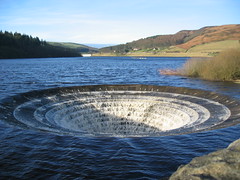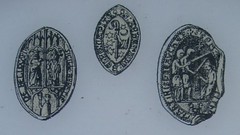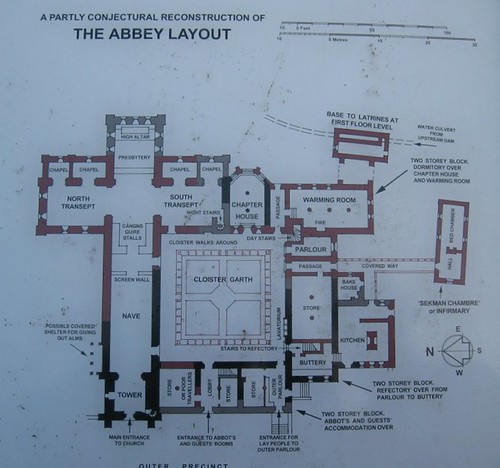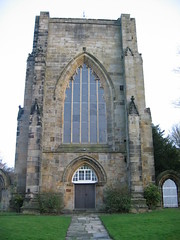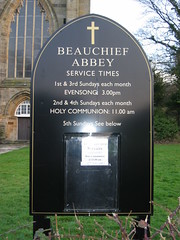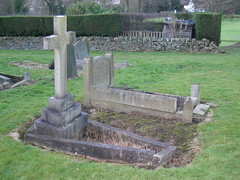We took a little stroll around Ladybower Reservoir yesterday. I've lived near here for years, but it was the first time I'd ever seen the famous "plug holes" in action.
The "plug holes" are the entrances to two very large drainage shafts that act as overflows from the reservoir. When the reservoir is full, the excess water pours down the "plug holes", cascades down the shafts which travel under the dam and into an area called the tailbay where it enters into the River Derwent.
The "plug holes" are the entrances to two very large drainage shafts that act as overflows from the reservoir. When the reservoir is full, the excess water pours down the "plug holes", cascades down the shafts which travel under the dam and into an area called the tailbay where it enters into the River Derwent.
Imagine watching the water from a bathtub that holds 6,300,000,000 gallons of water swirling down through a plug hole about 25 metres wide. It's spectacular. The water makes an amazing noise a it plunges down the shaft; it's like standing next to a waterfall, which of course is not surprising - it is a kind of waterfall.
The "plug holes", or more correctly the spillways, are beautifully constructed in a funnel shape. They obviously look their best when the reservoir is full, at low water levels they look pretty unspectacular: just like two big cylindrical chimneys, unless they are viewed from above, so that the stepped funnel structure can be seen.
The "plug holes", or more correctly the spillways, are beautifully constructed in a funnel shape. They obviously look their best when the reservoir is full, at low water levels they look pretty unspectacular: just like two big cylindrical chimneys, unless they are viewed from above, so that the stepped funnel structure can be seen.
If you'd like to see one of the spillways in action, this video gives an idea of how it looks and sounds:
The "plugholes" can clearly be seen at the southern end of the reservoir on this aerial shot from Google, although the water level was much lower on the day that these images were taken.
The size of the "plug holes"/spillways seems to be a closely guarded secret (at least that's my excuse for failing to discover the answer), my estimate of 25 metres is based on measurements taken from aerial shots like this one and one from MultiMap.
The green triangular area is the turfed surface of the embankment for the dam. The tailbay and the River Derwent can also be seenat the bottom of the picture.
Given the amount of rain we've had over the last few months, I'm sure the famous "plug holes" will be in action for some time yet.
--
Originally published here on my main blog http://three-legged-cat.blogspot.com/
